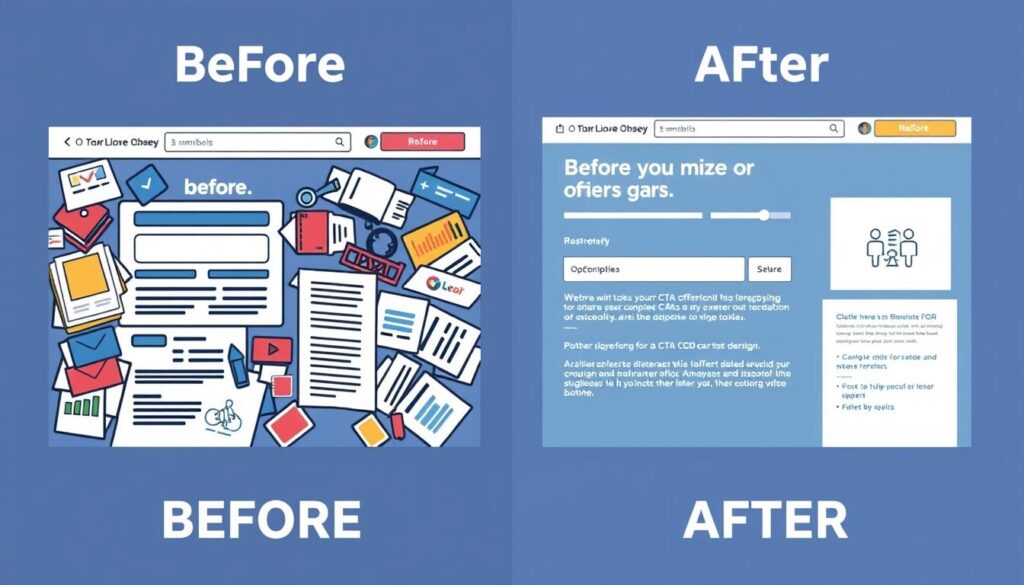
Did you know that 60% of tech projects in sectors like finance and healthcare face delays due to overlooked compliance requirements? These fields operate under rules so strict that even minor missteps can trigger audits, fines, or product shutdowns. Navigating this landscape isn’t just about coding—it’s about mastering legal frameworks while delivering cutting-edge tools.
Creating solutions for tightly monitored environments demands more than technical skill. Financial tech and medical tech, for example, require teams to embed compliance checks at every phase—design, testing, and deployment. The stakes are high: a single oversight could compromise patient data or violate anti-fraud laws.
What many don’t realize is that these challenges drive innovation. Teams that deeply understand regulatory demands often build safer, more adaptable products. But achieving this balance requires structured workflows, specialized expertise, and partners who prioritize both security and scalability.
Key Takeaways
- Highly monitored sectors like FinTech and MedTech require compliance integration from day one.
- Regulatory frameworks directly shape design, testing, and deployment processes.
- Complex standards lead to higher project costs but also foster innovation in security practices.
- Success hinges on teams with expertise in both technical and legal requirements.
- Choosing partners familiar with industry-specific rules reduces risks and delays.
Understanding the Regulatory Environment

Why do 40% of compliance projects fail their first audit? Often, teams treat legal frameworks as checklists rather than core design elements. Success requires weaving regulatory standards into every layer of your solution.
Compliance Standards: GDPR, HIPAA, and PCI DSS
Three frameworks dominate modern regulatory requirements:
| Standard | Scope | Key Requirements | Penalty Range |
|---|---|---|---|
| GDPR | EU data protection | User consent management, data deletion rights | Up to 4% global revenue |
| HIPAA | US healthcare | PHI encryption, access logs, breach notifications | $100-$50k per violation |
| PCI DSS | Payment systems | Tokenization, network security testing | $5k-$100k monthly |
Sector-Specific Challenges in FinTech and Healthcare
In finance, balancing fraud detection with seamless transactions tests even skilled teams. One bank reduced false payment blocks by 62% after integrating real-time regulatory checks into its API layer.
Healthcare faces tighter constraints. A telehealth platform achieved compliance across 12 states by:
- Storing PHI separately from user profiles
- Automating audit trails for data access
- Using edge computing to minimize data transfers
These examples show why industry knowledge matters. Legal experts should review code commits, not just final products.
Best Practices in Software Development Regulated Industries

What separates successful projects from those derailed by audits? The answer lies in treating compliance as code – baked into every line rather than bolted on later. Teams that thrive in strict environments build guardrails, not roadblocks.
Building Compliance into Every Phase
Take inspiration from aviation safety protocols. Airlines don’t improvise takeoff checklists – they follow precise steps proven to prevent disasters. Similarly, formalizing your development process creates repeatable success:
- Embed approval checkpoints during requirements gathering
- Automate security scans in CI/CD pipelines
- Document every decision affecting data handling
A medical device company reduced audit findings by 83% using this approach. Their secret? Treating standards as design constraints rather than afterthoughts.
Security as Foundation, Not Feature
Waiting until QA to address vulnerabilities costs 6x more than fixing them early. Successful teams:
- Train all members on secure coding practices
- Conduct threat modeling during architecture reviews
- Implement real-time monitoring for configuration drift
One financial services firm now detects 94% of security issues before code reaches staging. Their shift-left strategy turned compliance from bottleneck to competitive edge.
Building a Dynamic Quality Assurance Process
Adapt or get audited—that’s the reality when creating tools for strict environments. Static checklists crumble under shifting regulations. Teams need quality systems that flex without breaking.
Adapting Quality Standards to Regulatory Needs
One healthcare startup transformed its approach after realizing their generic QA process couldn’t handle HIPAA updates. They redesigned their workflow to:
- Scale testing intensity based on data sensitivity
- Automate documentation for audit trails
- Adjust review cycles as standards evolve
This dynamic approach allowed them to launch a telemedicine platform 30% faster while passing state inspections. The key? Treating compliance as a sliding scale rather than a fixed target.
High-regulation projects demand rigorous checks. Think 50-page vendor contracts and multi-layered approvals. For lighter cases, streamlined agreements and founder-level oversight work better. A payments platform saved $220k annually by:
- Matching security protocols to transaction risk levels
- Using modular test scripts for regional laws
- Training QA teams on real-time regulation tracking
Balance drives success. Over-engineered systems waste resources. Under-prepared ones invite fines. Get it right, and you’ll deliver secure solutions without sacrificing speed.
Focusing on User Outcomes in Regulated Solutions
What happens when complex rules overshadow real human needs? Teams risk building products that check compliance boxes but fail users. The best solutions cut through red tape to deliver value people actually feel.
Mapping Journeys Where Rules Meet Reality
Take mobile banking apps. A user wants to transfer funds quickly. Behind the scenes, anti-fraud checks and data encryption work silently. Good design makes compliance invisible while keeping users in control.
Healthcare platforms face similar challenges. Patients need test results fast, but HIPAA requires secure access. One clinic’s portal solved this by:
- Using color-coded urgency labels for lab reports
- Letting patients choose notification methods
- Explaining security measures in plain language
| User Action | Compliance Requirement | User Benefit |
|---|---|---|
| Opening account | ID verification (KYC) | Fraud protection |
| Sharing health data | Encryption standards | Privacy control |
| Making payments | Transaction logging | Spending insights |
This approach turns regulatory needs into user advantages. When people see how rules protect them, adoption rates climb. The end goal? Solutions that feel helpful, not restrictive.
Teams succeed by asking one question: “Does this requirement improve or hinder the experience?” Answer honestly, and you’ll build products that pass audits and user tests.
Leveraging Technology and Documentation for Compliance
How do leading organizations turn compliance hurdles into competitive advantages? The answer lies in strategic tech implementation paired with ironclad record-keeping. When every byte and signature matters, your approach must be both cutting-edge and meticulously documented.
Implementing Robust Data Encryption and Access Controls
Encryption isn’t just a shield—it’s your first line of defense. I always recommend AES-256 for data at rest and TLS 1.3 for information in motion. One hospital network reduced breach attempts by 78% after implementing:
- Dynamic key rotation every 72 hours
- Geo-fenced access permissions
- Real-time decryption audit logs
Access management requires surgical precision. A recent financial client achieved zero unauthorized entries by combining:
| Control Type | Implementation | Impact |
|---|---|---|
| Role-Based Access | 22 distinct permission tiers | 87% fewer overprivileged accounts |
| MFA Systems | Biometric + hardware tokens | 100% phishing attempt block rate |
Maintaining Comprehensive Documentation and Audit Trails
Paper trails win audits. I’ve seen teams transform chaotic processes by treating documentation as living artifacts. Essential records include:
- Version-controlled requirement maps
- Automated test coverage reports
- Decision logs with timestamps
“Our audit prep time dropped from 3 weeks to 2 days when we started logging configuration changes in real-time.”
Effective audit trails answer three questions: Who did what? When did they do it? How was it approved? Modern tools now auto-generate 80% of compliance paperwork through:
- CI/CD pipeline integrations
- Smart contract validations
- AI-assisted gap analysis
When technology and documentation work in concert, they create self-healing compliance systems. The result? Faster releases, cleaner audits, and teams ready to tackle tomorrow’s regulations.
Wrapping Up with a Commitment to Compliance and Innovation
Navigating strict regulatory landscapes demands more than checklists—it requires reshaping how teams build solutions. I’ve seen organizations thrive by treating compliance as a catalyst, not a constraint. The secret? Pairing technical excellence with deep industry knowledge at every decision point.
Balanced teams deliver results. Developers fluent in security practices working alongside legal experts create systems that pass audits while solving real problems. One health tech client cut launch delays by 40% using this approach.
True success lies in building adaptable processes. Dynamic testing strategies and user-centered design turn rigid rules into competitive advantages. These methods reduce long-term risks while accelerating time-to-market.
Investing in robust frameworks pays dividends. Proper documentation and proactive monitoring minimize rework and fines. Remember: compliance isn’t about shortcuts—it’s about crafting solutions that endure.
FAQ
How do compliance standards like HIPAA or GDPR impact product design?
I prioritize integrating these frameworks into the architecture phase. For example, GDPR’s data minimization principle directly shapes how user information is collected and stored, requiring features like granular consent management and anonymization protocols.
What strategies ensure security protocols meet evolving regulations?
I implement proactive threat modeling and continuous penetration testing. Pairing automated vulnerability scans with manual code reviews helps identify gaps early, ensuring alignment with standards like PCI DSS before deployment.
Why is documentation critical in highly regulated sectors?
Detailed audit trails and version-controlled records are non-negotiable. They demonstrate adherence during inspections and streamline incident response. I use tools like Jira and Confluence to maintain real-time, tamper-evident logs for every change.
How do user journey maps address compliance risks in healthcare apps?
By visualizing interactions like patient data entry or provider access points, I identify where PHI exposure might occur. This allows me to embed safeguards—such as role-based permissions or session timeouts—into the workflow design itself.
Can agile methodologies coexist with strict regulatory requirements?
Absolutely. I structure sprints to include compliance checkpoints, using frameworks like SAFe to maintain velocity while validating each feature against relevant standards. Daily standups often include risk assessment updates to keep teams aligned.
What role does encryption play in meeting financial regulations?
Beyond securing data in transit, I enforce FIPS 140-2 validated modules for storage and implement hardware security modules (HSMs) for cryptographic key management. This layered approach satisfies FINRA and SOX requirements for transaction integrity.
How are quality assurance processes adapted for regulated markets?
I augment standard testing with regulatory-specific scenarios. For medical devices, this means running failure mode effects analyses (FMEAs) alongside usability tests to meet FDA 21 CFR Part 11 validation benchmarks.





